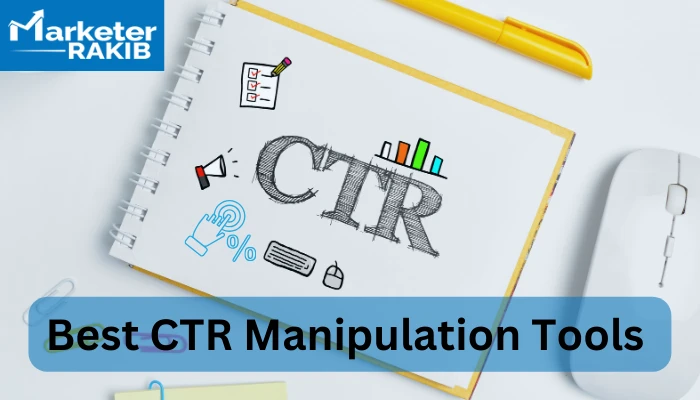Supercharge Your Link Structure Efforts with LinkDaddy CTR Manipulation Know-how
Supercharge Your Link Structure Efforts with LinkDaddy CTR Manipulation Know-how
Blog Article
Optimizing Organic Click-Through Fees With CTR Manipulation
The optimization of organic click-through prices (CTR) is a nuanced undertaking that pivots on comprehending both user psychology and efficient material presentation. The landscape is swarming with misunderstandings and oversimplifications regarding what really drives CTR.
Understanding Click-Through Fees
Comprehending click-through rates (CTR) is necessary for examining the effectiveness of online advertising and marketing approaches. CTR determines the percent of customers who click on a specific link or advertisement compared to the complete number of users that view it. A higher CTR indicates that the web content is engaging and appropriate to the target audience, while a reduced CTR may signal a demand for optimization.
To compute CTR, separate the variety of clicks by the number of impacts and increase by 100. If an advertisement gets 300 clicks out of 10,000 impressions, the CTR would certainly be 3%. This statistics is important for examining different elements of electronic advertising and marketing, including search engine optimization (SEARCH ENGINE OPTIMIZATION), e-mail campaigns, and social media advertising and marketing.
Moreover, assessing CTR assists marketing professionals determine which techniques generate the very best results and which call for improvement. By concentrating on improving CTR, companies can boost their content's visibility and effectiveness, bring about raised traffic and potential conversions. Recognizing the nuances of CTR is fundamental for any kind of marketing expert intending to optimize their on the internet existence and optimize return on investment (ROI)

The Psychology of User Behavior
Individual actions is considerably affected by emotional factors that determine exactly how individuals engage with on-line web content. Understanding these elements is necessary for enhancing click-through prices (CTR) in organic search engine result. Cognitive predispositions, such as the anchoring impact, play a crucial function fit users' understandings. Their first impacts can heavily influence their subsequent judgments concerning relevance and reputation. when individuals experience details.
Psychological feedbacks additionally considerably influence user behavior. Web content that resonates mentally can cause a feeling of urgency or curiosity, motivating individuals to click. Additionally, social proof-- such as individual reviews or rankings-- can improve trust and motivate engagement, as people frequently aim to the behaviors of others to educate their very own choices.
Furthermore, the concept of shortage can drive clicks - LinkDaddy CTR Manipulation. Limited-time offers or exclusive material produce a fear of missing out (FOMO), engaging users to act promptly. Recognizing these emotional motorists enables marketers to create even more engaging content that resonates with their target audience
Reliable CTR Adjustment Techniques
Leveraging psychological understandings can considerably enhance click-through prices (CTR) through targeted control strategies. One of one of the most efficient techniques is making use of engaging headlines that evoke interest or seriousness. Phrasing titles as questions or including numbers can draw in even more interest, motivating users to click.
An additional strategy entails enhancing meta descriptions to develop a feeling of relevance and immediacy. By clearly laying out the advantages or services supplied in the web content, you can engage potential viewers and encourage them to click. Furthermore, using power words-- such as "exclusive," "shown," or "free"-- can enhance the page charm of your material.
Aesthetic aspects also play a critical role. Incorporating appealing images or thumbnails can attract customers in and improve CTR. A/B screening different visuals can aid determine which photos reverberate finest with your audience.
Last but not least, guaranteeing that your material promises deliverable worth brings about greater CTR. When customers perceive that clicking will certainly supply them with meaningful insights or solutions, they are extra likely to engage. By employing these strategies attentively, marketers can efficiently control CTR to their benefit while preserving ethical standards.
Common Myths Concerning CTR
Numerous misunderstandings surround click-through prices (CTR) that can lead marketing professionals to make misdirected choices. While a high CTR recommends that even more customers are clicking, it does not guarantee sales or conversions.
An additional usual belief is that CTR is a separated metric. In truth, CTR needs to be examined together with other performance indications, such as bounce price and conversion rate, to gain an all natural sight of campaign success.
In addition, some marketing professionals assume that enhancing for CTR alone suffices. Nevertheless, concentrating exclusively on CTR can bring about clickbait tactics that may bring in clicks however useful source stop working to involve users meaningfully. This approach can harm brand name online reputation and outcome in reduced retention rates
Last but not least, there is a concept that CTR approaches are globally effective. The fact is that optimum CTR tactics can differ substantially throughout sectors and target audiences, necessitating customized techniques for different market sections. Comprehending these misconceptions is crucial for establishing effective CTR techniques that align with overarching marketing goals.
Measuring CTR Success
Although high click-through prices (CTR) can indicate successful involvement with web content, determining their true success needs a comprehensive evaluation of several factors. First, it is necessary see it here to recognize the context in which the CTR is achieved. For circumstances, a high CTR on a deceptive title may not equate to significant engagement or conversions, ultimately showing poorly on the brand's reliability.
2nd, examining the resource of website traffic is crucial. Organic website traffic from internet search engine can indicate a robust web content technique, while clicks from unimportant resources may show an absence of targeting. In addition, gauging the subsequent individual habits is important; analyzing metrics such as bounce price, time invested in page, and conversion rates can offer much deeper insights into the quality of the involvement launched by the CTR.

Final Thought
The optimization of organic click-through rates (CTR) is a nuanced undertaking that pivots on recognizing both individual psychology and effective material presentation. CTR measures the percent of users who click on a particular web link or advertisement contrasted to the total number of individuals who view it. A greater CTR indicates that the material is engaging and appropriate to the target audience, while a lower CTR may signify a need for optimization.
Focusing specifically on CTR can lead to clickbait tactics that might attract clicks but fail to involve customers meaningfully. Additionally, measuring the subsequent individual habits is important; evaluating metrics such as bounce price, time spent on web page, and conversion prices can provide deeper understandings into the high quality of the interaction initiated by the CTR.
Report this page